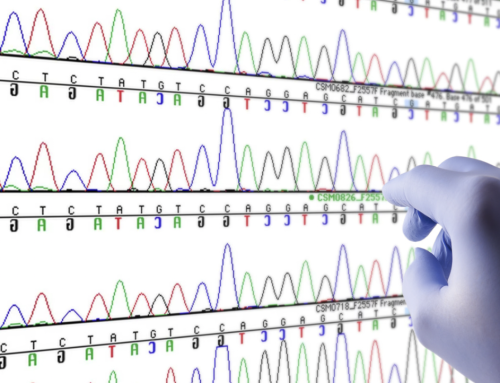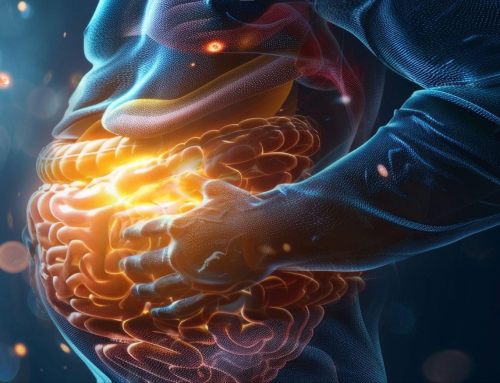Wheels Within Wheels: Influence of the Gut-Brain Axis and HPA Axis
Advances in science have established bidirectional, integrated systems in the body that connect the gut to the brain in feedback loops that expand in scope and number as investigative tools improve. As hardware, computing techniques, and even AI assist the examination of the relationships of bodily systems, a complex picture of mutual influence emerges. The study of the interplay between the major players, the Gut-Brain Axis (GBA), the Hypothalamic-Pituitary-Adrenal (HPA Axis), and the gut microbiota may well revolutionize the realm of personalized medicine. Research in the ever-advancing “-omics” is continually helping to clarify the relationships of these complex networks. Going forward, AI and machine learning will further assist the interpretation of data and advance personalized medicine to a degree of astonishing customization. What follows is a brief review of some of the major players in this realm of bodily influence.
The Gut-Brain Axis (GBA) and the Enteric Nervous System (ENS)
A complicated communication system exists between the central nervous system (CNS) and the Enteric Nervous System (ENS) of the gut. While the human brain holds the high seat in the CNS, its analog, the ENS, consists of close to half a million neurons living around the gut and integrating into the gastrointestinal (GI) wall. Through these sensory and motor neurons, the ENS is part of the GI tract which sends motor-sensory information to the CNS.
As part of the autonomic nervous system (ANS), along with the sympathetic and parasympathetic nervous systems, the ENS helps regulate digestive functions. Some call the ENS the “second brain.” This local control appears to have evolved to offload the administration of digestion, spatially close to the digestive organs for prompt and discrete control but in frequent two-way communication with the CNS through prevertebral ganglia (1). This bidirectional communication established between the two systems is called the Gut-Brain Axis (GBA).
Anatomically, the GBA achieves its bidirectional communication through neurons that extend from the brainstem and spinal cord to the GI tract, as well as other organs participating in digestion, such as the liver and the pancreas. Efferent communication from the CNS innervates the viscera of the abdomen, utilizing the vagal, pelvic-spinal, mesenteric, and splanchnic nerves (2). Surprisingly, it is surmised that 90% of the vagal nerve is used for afferent communication (3). This incoming information from the gut is processed by the CNS, which then engages positive and negative feedback loops that act on distant organs to maintain homeostasis.
Physiologically, numerous studies have established that microbial metabolites of the gut microbiota have input to this bidirectional communication. This influence extends to affecting brain chemistry and the neuroendocrine system while the host homeostatically rights itself. Researchers must rigorously tease out endogenous metabolites from metabolites created by the microbiota to achieve clarity about the source of a given impact, often using many fields of -omics to do so.
When a malady disrupts the gut-brain axis, the consequences can include severe disorders involving high amounts of inflammation in the gut, sub-optimal responses to stress, and negative effects on behavior. Because a disrupted GBA can have such a wide array of negative consequences, it makes the reciprocal network a ripe ground for researching new therapeutics (4).
The Hypothalamic-Pituitary-Adrenal (HPA) Axis
Another set of organ feedback loops called the HPA axis adds complexity to the system, adding to and influencing the Gut-Brain Axis. The HPA axis is part of the Neuroendocrine System (NES) (5) which is a regulatory mechanism that interacts with a variety of structures, releasing or inhibiting hormones that can affect metabolism and growth, help respond to stressors, and elicit responses from the immune system, among other things. Complementary to the HPA axis, the ANS’s sympathetic and parasympathetic subconscious processes can affect the NES, resulting in altered motility of the gut.
In the HPA axis, the hypothalamus, pituitary, and adrenal glands secrete hormones that affect receptors in each other, in addition to target organs such as the thyroid, liver, and reproductive organs, regulating the release of their hormones as well. While the adrenals are lower in the body and reside above the kidneys, the hypothalamus and pituitary structures are within the brain on the other side of the blood-brain barrier, which acts as a filter and prevents some chemicals from reaching them.
When the host perceives stress, the hypothalamus is triggered to release corticotropin-releasing hormone (CRH) and arginine vasopressin (AVP). CRH and AVP stimulate the pituitary, which releases adrenocorticotropic hormone (ACTH) into the bloodstream. The adrenal glands have ACTH receptors that, when stimulated, cause the adrenals to release the hormone cortisol. Cortisol helps regulate mundane functions such as the use of macronutrients, suppressing inflammation, and helping regulate blood pressure, but also can be a precursor or aftermath of adrenaline release. Acute rises in cortisol are very beneficial and are regulated by a negative feedback loop that inhibits the hypothalamus and pituitary when certain levels of corticosteroids such as cortisol are reached. However, chronically elevated cortisol (due to prolonged stress of some sort) is associated with multiple negative health outcomes, including obesity, lowered immunity, and inflammation (6).
From afar, gut microbiota can exert influence over the HPA axis through several substances that can cross the blood-brain barrier, for example, cytokines, prostaglandins, and microbial antigens (7).
The Gut Microbiota
Another major influence on the system as a whole, competing in importance with the GBA and the HPA axis, is the gut microbiota. The collection of microorganisms that live in the guts of mammals can be called the gut microbiota (8). (Note, the microbiome refers to both the microorganisms and their genetic material.) The gut microbiota is made up of the different kinds of microorganisms such as viruses, fungi, and bacteria that colonize the GI tract. Metagenomics has lent great detail to the genetic makeup of these microorganisms that make up the microbiota. Other -omics have contributed to the pathways of communication and associated functions of these microorganisms and their byproducts. As a result, some are now calling the microbiome the “third brain,” and for very good reason.
Despite all the studies, the exemplification of the “perfect” microbiota is extremely difficult. It’s not a “one size fits all” determination, as the gut microbiota develops in concert with the mammal’s gut, CNS and ENS. The gut microbiota is heavily influenced by nutrients and immune factors present in the mother’s milk as well as diet and environmental factors as the human host ages.
Can we measure what healthy microbiota consists of? When studies are done on the microbiota, the genomes of the microorganisms in the sample can be determined through tools of metagenomics such as whole genome sequencing or shotgun sequencing. The RNA of the microorganisms can be examined with the 16S sequencing technology of transcriptomics to get the bacterial composition and the range of diversity. The proteins can be identified with proteomics. Metabolites of the host and the host’s gut microorganisms can be examined through mass spectrometry. The stool can be examined with probes or culturing.
However, when all is said and done, there is no one exact lineup of microorganisms that we all have if we have a healthy gut or one exact lineup if we do not. It is said that the human microbiota is as unique to that one person as a fingerprint! True, we have an idea about ranges of ideal numbers of and types of microorganisms, and data has converged to reveal that two main phyla of bacteria, Bacteroidetes and Firmicutes, typically dominate the human gut microbiota (9) once development slows and maturation is reached. Over time, we have gathered data about normally docile microorganisms that become pathogenic if their numbers become too great or if they get in the “wrong” area and flourish.
Perhaps the continued attempts to establish what a healthy microbiota consists of results in frequent research and study into any perceived imbalances of gut flora (called dysbiosis), especially when unpleasant symptoms emerge in the human host. High percentages of humans worldwide live in discomfort due to gut flora imbalance such as Small Intestinal Bacterial Overgrowth (SIBO), Inflammatory Bowel Disease (IBD) (10), and Irritable Bowel Syndrome (IBS) (11). Advanced hardware, software, and the ability to manipulate and filter through large datasets have revolutionized multiple fields of science, giving us new insights into this fascinating realm. Already these new technologies have been incorporated into stool, blood, and urine tests that can give an incredible amount of insight into the nature of dysbiosis and hint at the future of treatments.
Short Chain Fatty Acids (SCFAs) – Microbial Metabolite of Interest and Neuroendocrine Indicator
Organs respond not only to endogenously made chemicals, such as the neurotransmitter serotonin (largely produced in the gut) but also to chemicals created by the actions of microorganisms in the guts. Some of these chemicals can serve as neuroendocrine indicators. As one study succinctly states, “increasing evidence suggests that the gut microbiota acts through direct production of neuroendocrine metabolites (hormone-like metabolites such as short-chain fatty acids (SCFAs), neurotransmitters, GI hormones, precursors to neuroactive compounds such as tryptophan & kynurenine) and, indirectly, as a modulator of inflammatory responses and immune responses”(12).
An example of a hormone-like metabolite is short-chain fatty acids. Dietary fiber is broken down by gut microbiota into SCFAs, the 3 main types being butyrate, propionate, and acetate. SCFAs are believed to be involved in gut-brain signaling pathways that include endocrine, neural, humoral, and immune routes (13). It is not a stretch to say that these metabolites, including SCFAs, can exert “diet-based microbial influence on the host (14).”
Specific targets of SCFAs are G protein-coupled receptors(GPCRs), which are widely dispersed in immune cells in mammals, among other places. When activated by SCFAs, GPCRs can help regulate immune responses. SCFAs also affect DNA expression by inhibiting histone deacetylases (HDAC) (14) which provides anti-inflammatory action on intestinal epithelial cells (15).
Another intriguing avenue of study is the ability of SCFAs to bring back microglial function (16). Microglia are a type of supporting cell in the CNS that can perform phagocytosis and immune responses. Traumatic injury to the spinal cord can even be repaired with the help of microglia in the mouse model, with clear signs that diet does affect the outcome (17).
Interdisciplinary Needs of Metabolite Studies – “omics”
To gain insight into the microbiota and how it influences the other major feedback system in the body, there is a need to quantify the chemicals that flow to and from it. Enter metabolomics, the study of metabolites in cells or whole biological systems. Advances in mass spectrometry have provided meaningful data and clarified our understanding of the microbiota (18). Researchers go so far as to say, “Mass spectrometry-based metabolomics is uniquely suitable for obtaining the metabolic signals in bidirectional communication between gut microbiota and brain” (18).
However, it is often necessary to involve more than one “-omics” to form a solid picture of the taxonomy, abundance, and functionality of a microorganism, the metabolites it makes, and how those metabolites might act upon various structures in the body. Highlighting the interdisciplinary nature of such studies, SCFAs, for example, was shown to reduce stress-induced gut-brain axis changes using no fewer than 6 different techniques: qRT-PCR probes to clarify gene expression (transcriptomics), 16s metagenomic sequencing library protocol to discern taxonomy, bioinformatics performed on the data set, and the samples analyzed by 3 types of mass spectrometry for metabolomic study (18).
The Future
When applied to the huge datasets derived from gut microbiota studies, Artificial Intelligence (AI) and machine learning are sure to push the evolution of the understanding of our internal milieu. With researchers around the world contributing huge datasets to databases and the ability of AI to predict the impact of a particular medicine, diet, or nutritional supplement on the microbiota, the knowledge of GBA and CNS will grow. A custom program unique to a particular human’s microbiota will transform lives around the world. We will edge closer and closer to understanding what a “healthy gut” is for that particular human, making personalized medicine an intriguing and meaningful field of research.
References
- Furness JB, Callaghan BP, Rivera LR, Cho H-J. The enteric nervous system and gastrointestinal innervation: Integrated local and Central Control [Internet]. SpringerLink. Springer New York; 1970 [cited 2022Aug10]. Available from: https://link.springer.com/chapter/10.1007/978-1-4939-0897-4_3
- Gautron L. Molecular anatomy of the gut-brain axis revealed with transgenic technologies: Implications in metabolic research [Internet]. Frontiers. Frontiers; 1AD [cited 2022Aug10]. Available from: https://www.frontiersin.org/articles/10.3389/fnins.2013.00134/full
- Hadhazy A. Think twice: How the gut’s “Second brain” influences mood and well-being [Internet]. Scientific American. Scientific American; 2010 [cited 2022Aug10]. Available from: https://www.scientificamerican.com/article/gut-second-brain/
- Cryan JF, O’Riordan KJ, Cowan CSM, Sandhu KV, Bastiaanssen TFS, Boehme M, Codagnone MG, Cussotto S, Fulling C, Golubeva AV, Guzzetta KE, Jaggar M, Long-Smith CM, Lyte JM, Martin JA, Molinero-Perez A, Moloney G, Morelli E, Morillas E, O’Connor R, Cruz-Pereira JS, Peterson VL, Rea K, Ritz NL, Sherwin E, Spichak S, Teichman EM, van de Wouw M, Ventura-Silva AP, Wallace-Fitzsimons SE, Hyland N, Clarke G, Dinan TG. The Microbiota-Gut-Brain Axis. Physiol Rev. 2019 Oct 1;99(4):1877-2013. doi: 10.1152/physrev.00018.2018. PMID: 31460832.
- Toni R. The neuroendocrine system: organization and homeostatic role. J Endocrinol Invest. 2004;27(6 Suppl):35-47. PMID: 15481802.
- Cortisol: What it is, function, symptoms & levels [Internet]. Cleveland Clinic. [cited 2022Aug10]. Available from: https://my.clevelandclinic.org/health/articles/22187-cortisol
- Misiak B;Łoniewski I;Marlicz W;Frydecka D;Szulc A;Rudzki L;Samochowiec J; The HPA axis dysregulation in severe mental illness: Can we shift the blame to gut microbiota? [Internet]. Progress in neuro-psychopharmacology & biological psychiatry. U.S. National Library of Medicine; [cited 2022Aug10]. Available from: https://pubmed.ncbi.nlm.nih.gov/32335265/
- Sokol H. Définition et rôles du microbiote intestinal [Definition and roles of the gut microbiota]. Rev Prat. 2019 Sep;69(7):776-782. French. PMID: 32233323.
- Mischa. Gut bacteria: The inside story [Internet]. Curious. 2019 [cited 2022Aug10]. Available from: https://www.science.org.au/curious/people-medicine/gut-bacteria
- Elflein J. Topic: Inflammatory bowel disease (IBD) in the U.S. [Internet]. Statista. [cited 2022Aug10]. Available from: https://www.statista.com/topics/4340/inflammatory-bowel-disease-ibd-in-the-us/#dossierKeyfigures
- Patel N, Shackelford K. Irritable Bowel Syndrome. [Updated 2022 Jul 4]. In: StatPearls [Internet]. Treasure Island (FL): StatPearls Publishing; 2022 Jan-.
- Cussotto S, Sandhu KV, Dinan TG, Cryan JF. The neuroendocrinology of the microbiota-gut-brain axis: A behavioural perspective [Internet]. Frontiers in Neuroendocrinology. Academic Press; 2018 [cited 2022Aug12]. Available from: https://www.sciencedirect.com/science/article/abs/pii/S0091302218300396
- Dalile, B., Van Oudenhove, L., Vervliet, B. et al. The role of short-chain fatty acids in microbiota–gut–brain communication. Nat Rev Gastroenterol Hepatol 16, 461–478 (2019). https://doi.org/10.1038/s41575-019-0157-3
- Koh A; De Vadder F; Kovatcheva-Datchary P; Bäckhed F; From dietary fiber to host physiology: Short-chain fatty acids as key bacterial metabolites [Internet]. Cell. U.S. National Library of Medicine; [cited 2022Aug10]. Available from: https://pubmed.ncbi.nlm.nih.gov/27259147/
- Sun M, Wu W, Liu Z, Cong Y. Microbiota metabolite short chain fatty acids, GPCR, and inflammatory bowel diseases. J Gastroenterol. 2017 Jan;52(1):1-8. doi: 10.1007/s00535-016-1242-9. Epub 2016 Jul 23. PMID: 27448578; PMCID: PMC5215992.
- Erny D, Hrabě de Angelis AL, Jaitin D, Wieghofer P, Staszewski O, David E, Keren-Shaul H, Mahlakoiv T, Jakobshagen K, Buch T, Schwierzeck V, Utermöhlen O, Chun E, Garrett WS, McCoy KD, Diefenbach A, Staeheli P, Stecher B, Amit I, Prinz M. Host microbiota constantly control maturation and function of microglia in the CNS. Nat Neurosci. 2015 Jul;18(7):965-77. doi: 10.1038/nn.4030. Epub 2015 Jun 1. PMID: 26030851; PMCID: PMC5528863.
- Nature news. Nature Publishing Group; [cited 2022Aug10]. Available from: https://www.nature.com/subjects/microglia
- Luan H, Wang X, Cai Z. Mass spectrometry-based metabolomics: Targeting the crosstalk between gut microbiota and brain in neurodegenerative disorders. Mass Spectrom Rev. 2019 Jan;38(1):22-33. doi: 10.1002/mas.21553. Epub 2017 Nov 12. PMID: 29130504.












